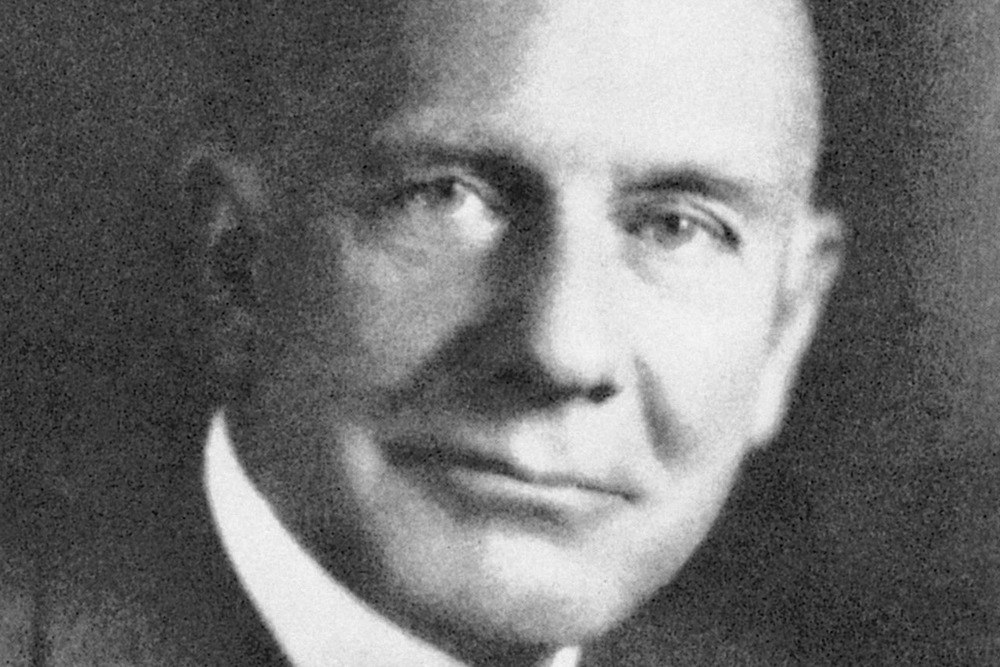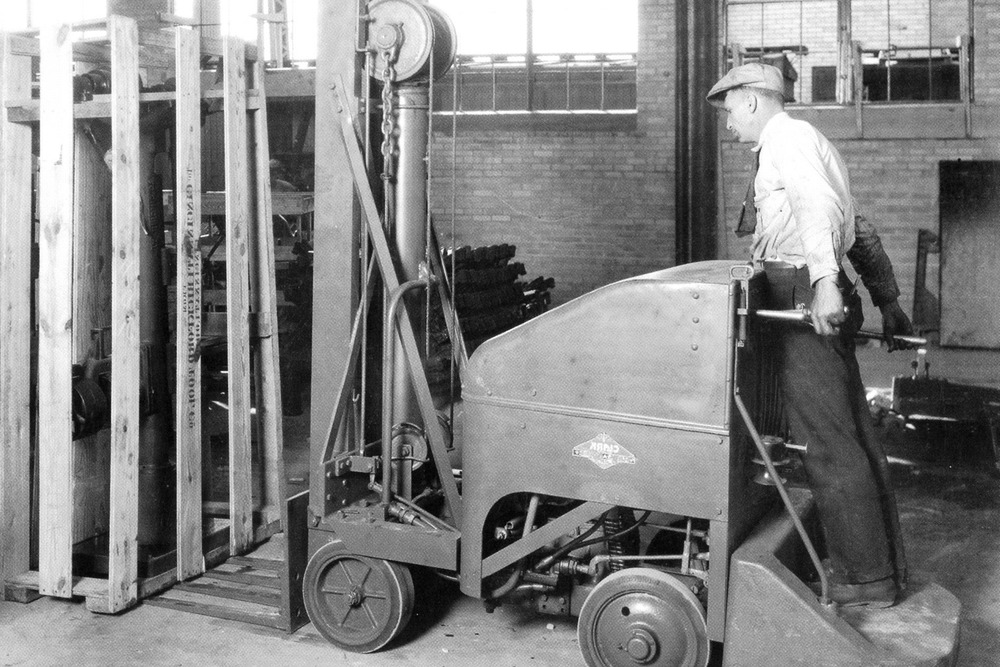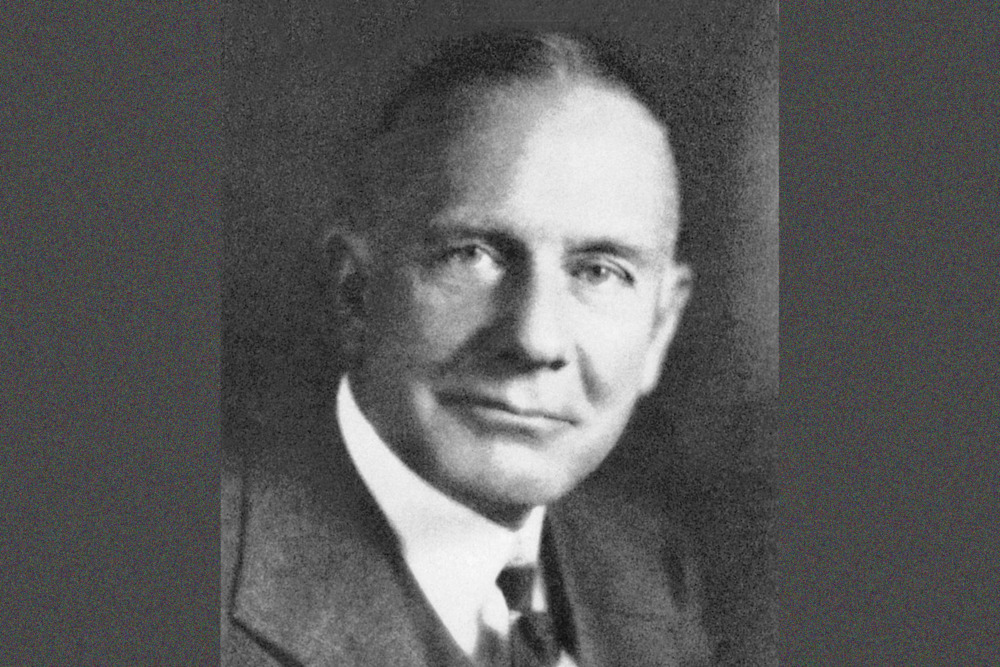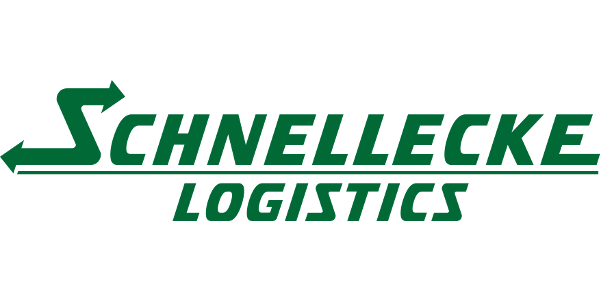Eugene Bradley Clark
Eugene Bradley Clark: inventor of the forklift truck
Eugene Bradley Clark (*1873 †1942) is the inventor of the forklift truck. Clark presented the forerunner of the modern front-loading truck in the USA in 1917. He was inducted into the Logistics Hall of Fame in 2007 in recognition of this innovation, without which today's logistics activities would be unthinkable.
| Field | intralogistics |
| Born | 1873 in Columbia, USA |
| Died | 1942 in Chicago, USA |
| Induction into the Logistics Hall of Fame | 2007 |
-
Vita
1873 Clark is born as the son of Ezra W. and Sylvia C. Clark in Columbia, USA, and grows up on a farm near Washington D.C.
1894 Awarded a degree in Mechanical Engineering by Cornell University in Ithaca, New York
1904 Is married to his first wife Laura and works as a white-collar employee at Illinois Steel Works in Chicago, Illinois/USA
1904 Joins the George R. Rich Manufacturing Company drill factory as an advisor, later as manager and partner
1909 First trip to Europe
1916 Clark merges the Celfor Tool Company with the Buchanan Electric Steel Company to form the Clark Equipment Company, becoming the new company's Managing Director
1917 Development of the "Tructractor", the forerunner of the modern forklift truck
1928 Clark takes his company public and survives the world economic crisis with the fresh capital he raises
1942 Eugene Bradley Clark dies of pneumonia in Chicago at the age of 69
2007 Induction into the Logistics Hall of Fame
-
Merits
- In 1904, Clark joined the still young George R. Rich Manufacturing Company as an advisor; he made the company profitable and became an equal partner. The company was subsequently renamed Celfor Tool Company. In 1910, Clark founded the Electric Steel Company, which made cast metal in electric furnaces as well as wheel rims and truck axles for the nascent automotive industry. In 1916, he merged the Celfor Tool Company and the Electric Steel Company to form the Clark Equipment Company.
- In his factories, Clark produced drills for train wheels and steel rims as well as axles. In order to be able to transport sand and heavy cast blanks between the factory halls, Clark and his workers built a crude three-wheeled petrol-driven vehicle in 1917 This vehicle had a loading container at the front with a capacity of just under two tons. To turn left, the operator paradoxically had to steer to the right and vice-versa. And to stop the vehicle, the operator had to "drive into" something – brakes were superfluous frills. Shortly after the invention of this vehicle, the US Army found out about it during World War One and used it to transport ammunition in its depots. Brakes were fitted along with improved steering, and the vehicle was given the name "Tructractor". In 1919, Clark sold 75 "Tructractors".
- The "Tructractor" was followed in 1922 by the "Truclift", the first platform lifting truck with a hydraulic lifting mechanism and a load capacity of between 1,820 and 4,545 kilograms.
- In 1923, Clark launched the petrol-driven "Duat", a three-wheeled tow tractor. The name was a play on words from "do this, do that". One year later, a mechanically driven lifting device for loads up top 455 kilograms became available for the tow tractor as an add-on unit. Thus the first petrol-operated front-loading lift truck was born. Clark called the counterweights it used "augmenters".
- The "Tructier", based on the "Truclift" made its debut in 1928. It was the first petrol-driven front-loading stacker with hydraulic lifting mechanism and could handle loads from 1,820 to 2,730 kilograms.
Photos: Clark

















































